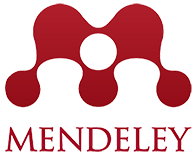OCEANIC VERSES OF THE QUR’AN AND THEIR POINTERS TO TECHNOLOGICAL SOLUTIONS
DOI:
https://doi.org/10.31291/hn.v8i2.339Keywords:
Ocean Verses, Baḥr, Knowledge of Islamic Ocean IntroductionAbstract
This study aims to explore the phenomenon of the ocean recited in the verses of the Quran such as, fire/energy in the ocean, two oceans that do not blend, deep darkness of the ocean, sea boundary, oceanic layers, and the abundantwealth of the sea for humanity. This article focuses first on the semantic aspects on oceanic verses as revealed and found in 42 verses in the Quran and then how these verses could be used as guidance for technological solutions. The study uses the methodof interpretation of bir rakyi or interpretation within reason using the scientific method. Modern semantic scientific methods, ontology, and the categorization of verses are used for further understanding and developing a framework for further study in developing a foundation for Islamic Marine Knowledge. The study findings indicate that the knowledge of layers in the seawater column, as mentioned in the Quran, could be a blessing for Muslims to be inspired and guided to find more discoveries and benefitsof this water layer phenomenon. These ancient manuscripts are relevant to the challenges of modern civilization, such as food and energy security and environmental control. There are clues in these oceanic verses about technological solutions to the existing and future humanitarian problems, which Muslims can use as a divine guidance.
Downloads
References
’Abbas, I. (2012). Tafsir Ibn ‘Abbas (Mokrane Guezzou (Ed.)). Royal Aalal-Bayt Institute for Islamic Thought.
Al-jalalayn. (2012). Tafsir al-Jalalayn. Royal Al al-Bayt Institute for Islamic Thought.
Audah, A. (1992). Konkordansi Al Qur’an. Litera Antar Nusa.
Badawi, E. M., & Haleem, M. A. (2008). Arabic-English Dictionary of Qur’anic Usage. In Handbook Of Oriental Studies Handbuch Der Orientalistik Section One, The Near And Middle East (Aaltenmuller (Ed.); 8th ed.). Koninklijke Brill NV.
Dagobert, R. D. (1976). Dictionary of Philosophy. Adam and Company.
Djamil, A. S. (2004). Al-Quran dan Lautan Arasy.
Dukes, K. (2011). Quranic Arabic Corpus. Retrieved from http://corpus.quran.com/.
Engel, L. (1979). Laut. Jakarta: Pustaka TIME-LIFE.
Gruber, T. R. (1995). Toward principles for the design of ontologies used for knowledge sharing. International Journal of Human-Computer Studies, 43(4–5), 907–928.
International, S. (1997). The Quran: Arabic Text with Corresponding English Meanings. Almunatada Alislami. Abul Qasim Publishing House.
Obitko, M. (2007). Translations between Ontologies in Multi-Agent Systems. Department of Cybernetics. Retrieved from http://keg.vse.cz/_slides/obitko-2007.pdf
Shihab, M. Q. (1997). Mukjizat Al-Quran: Ditinjau dari Aspek Kebahasaan, Aspek Ilmiah, dan Pemberitaan Gaib. Mizan Pustaka.
Talbot, F. H., & Stevenson, R. E. (1991). The Encyclopedia of the Earth: Oceans and Islands. Popular Culture Ink.
Yusoh, Y., & Muhammad, A. (2012). Falsafah Ilmu dalam Al Quran; Ontology, Epistemology dan Aksiologi. Penerbit UTM Press.
Downloads
Published
Issue
Section
License
Copyright (c) 2019 Heritage of Nusantara: International Journal of Religious Literature and Heritage

This work is licensed under a Creative Commons Attribution-NonCommercial-ShareAlike 4.0 International License.






